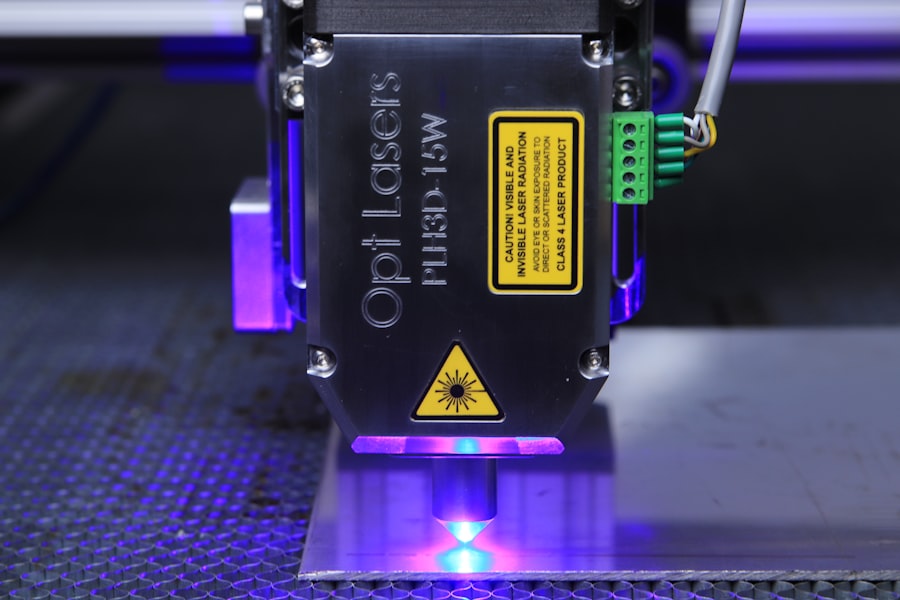When considering hair removal options, Brazilian laser hair removal has gained significant popularity for its effectiveness and long-lasting results. This method utilizes concentrated beams of light to target hair follicles, effectively reducing hair growth over time. You may find this technique appealing due to its precision and the ability to treat large areas quickly.
Unlike traditional methods such as shaving or waxing, which can be time-consuming and often lead to irritation, laser hair removal offers a more permanent solution, making it an attractive choice for many. As you explore this option, it’s essential to understand not only the benefits but also the potential side effects and risks associated with the procedure. While Brazilian laser hair removal can provide a smooth and hair-free experience, it is crucial to be informed about what to expect during and after the treatment.
This knowledge will empower you to make an informed decision and prepare adequately for the process, ensuring that you achieve the best possible results while minimizing any adverse effects.
Key Takeaways
- Brazilian laser hair removal is a popular method for achieving long-term hair reduction in the bikini area.
- Common side effects of Brazilian laser hair removal may include redness, swelling, and mild discomfort.
- Potential risks and complications of Brazilian laser hair removal include burns, blisters, and changes in skin pigmentation.
- Skin reactions and irritation such as itching and sensitivity may occur after Brazilian laser hair removal treatment.
- Pain and discomfort during Brazilian laser hair removal can be managed with numbing creams and cooling techniques.
Common Side Effects of Brazilian Laser Hair Removal
As with any cosmetic procedure, Brazilian laser hair removal comes with its share of common side effects. You may experience mild discomfort during the treatment, which can manifest as a sensation similar to a rubber band snapping against your skin. This sensation is typically brief and subsides quickly after the session.
Additionally, it’s not uncommon for the treated area to appear slightly red or swollen immediately following the procedure. These reactions are usually temporary and should resolve within a few hours to a couple of days. Another side effect you might encounter is changes in skin texture.
Some individuals report experiencing dryness or flakiness in the treated area post-treatment. This can be attributed to the laser’s effect on the skin’s surface. While these side effects are generally mild and manageable, it’s essential to monitor your skin’s response and consult with your practitioner if you notice any unusual or prolonged reactions.
Understanding these common side effects can help you prepare mentally and physically for your Brazilian laser hair removal experience.
Potential Risks and Complications

While Brazilian laser hair removal is considered safe for most individuals, there are potential risks and complications that you should be aware of before undergoing the procedure. One of the primary concerns is the possibility of burns or blisters on the skin, particularly if the laser settings are not appropriately adjusted for your skin type and hair color. This risk underscores the importance of choosing a qualified and experienced practitioner who can tailor the treatment to your specific needs.
In rare cases, you may also experience more severe complications such as changes in skin texture or scarring. These outcomes are typically associated with improper technique or inadequate aftercare. It’s crucial to have realistic expectations and understand that while complications are uncommon, they can occur.
By discussing your concerns with your practitioner beforehand, you can better understand how to mitigate these risks and ensure a safer experience.
Skin Reactions and Irritation
| Product | Skin Reaction | Irritation Level |
|---|---|---|
| Lotion A | Redness, itching | Mild |
| Soap B | Dryness, flakiness | Moderate |
| Cream C | Rash, burning sensation | Severe |
Skin reactions are among the most common responses following Brazilian laser hair removal. You may notice redness, swelling, or a slight burning sensation in the treated area immediately after your session. These reactions are generally mild and should subside within a few hours.
However, some individuals may experience prolonged irritation, which can be uncomfortable. It’s essential to follow your practitioner’s aftercare instructions carefully to minimize these reactions. In addition to immediate reactions, some people may develop hyperpigmentation or hypopigmentation in the treated area.
This means that your skin may become darker or lighter than its natural tone due to the laser’s impact on melanin production. While these changes are often temporary, they can be distressing for some individuals. If you have a history of skin sensitivity or pigmentation issues, discussing these concerns with your practitioner before treatment can help you make informed decisions about whether Brazilian laser hair removal is right for you.
Pain and Discomfort
Pain and discomfort are subjective experiences that vary from person to person during Brazilian laser hair removal. While many individuals report only mild discomfort akin to a rubber band snap, others may find the sensation more intense, particularly in sensitive areas. If you are concerned about pain during the procedure, it’s advisable to discuss pain management options with your practitioner beforehand.
They may recommend topical anesthetics or cooling devices to help alleviate discomfort during treatment. Post-treatment discomfort is also a consideration. You might experience some soreness or tenderness in the treated area for a short period after your session.
Applying soothing creams or cold compresses can help ease any lingering discomfort. Understanding that some level of pain is normal can help you mentally prepare for the experience and allow you to focus on the long-term benefits of Brazilian laser hair removal rather than any temporary discomfort.
Pigmentation Changes

Pigmentation changes are a potential side effect of Brazilian laser hair removal that can affect individuals differently based on their skin type and tone. After treatment, you may notice that your skin appears darker or lighter in the treated area due to alterations in melanin production. These changes can be particularly concerning for those with darker skin tones, as they may be at a higher risk for hyperpigmentation.
Fortunately, most pigmentation changes are temporary and will resolve over time as your skin heals. However, it’s essential to take preventive measures to minimize these risks. Using sunscreen diligently on the treated area can help protect against further pigmentation changes caused by sun exposure.
Additionally, discussing your skin type with your practitioner before treatment can help them adjust their approach accordingly, reducing the likelihood of adverse pigmentation effects.
Infection and Scarring
While infections following Brazilian laser hair removal are rare, they can occur if proper aftercare is not followed.
You should refrain from activities that could introduce bacteria into the treated area, such as swimming in pools or hot tubs, for at least 48 hours post-treatment.
Scarring is another concern that can arise from improper technique or inadequate aftercare. If you have a history of keloid scarring or other skin conditions, it’s crucial to discuss this with your practitioner before undergoing treatment. They can provide guidance on how to minimize your risk of scarring and ensure that you receive appropriate care throughout the process.
Minimizing Side Effects and Aftercare
To minimize side effects associated with Brazilian laser hair removal, proper aftercare is paramount. Following your practitioner’s post-treatment instructions diligently will significantly reduce your risk of complications. This may include avoiding sun exposure, using gentle cleansers on the treated area, and applying soothing creams as needed.
Additionally, staying hydrated and maintaining healthy skin through regular moisturizing can aid in recovery and minimize irritation. If you experience any unusual symptoms or prolonged side effects, don’t hesitate to reach out to your practitioner for guidance. By taking proactive steps in your aftercare routine, you can enhance your overall experience and enjoy the long-lasting benefits of Brazilian laser hair removal while minimizing potential side effects.
If you are considering Brazilian laser hair removal, it is important to be aware of the potential side effects that may occur. According to a recent article on
com/home-fashion/’>In Laser Hair Removal’s website or contact them directly at https://www.inlaserhairremoval.com/contact/.
FAQs
What is Brazilian laser hair removal?
Brazilian laser hair removal is a cosmetic procedure that uses concentrated beams of light to remove unwanted hair from the bikini area. It is a popular choice for those looking for long-term hair reduction in the pubic region.
How does Brazilian laser hair removal work?
During the procedure, a laser emits a light that is absorbed by the pigment in the hair follicles. The heat from the laser damages the hair follicles, inhibiting future hair growth.
What are the potential side effects of Brazilian laser hair removal?
Some potential side effects of Brazilian laser hair removal may include temporary redness, swelling, and discomfort in the treated area. In rare cases, there may be changes in skin pigmentation, blistering, or scarring. It is important to consult with a qualified and experienced professional to minimize the risk of side effects.
How can I minimize the risk of side effects from Brazilian laser hair removal?
To minimize the risk of side effects, it is important to choose a reputable and experienced provider for the procedure. It is also crucial to follow pre and post-treatment care instructions provided by the provider. Additionally, it is important to disclose any medical conditions or medications to the provider before undergoing the procedure.





